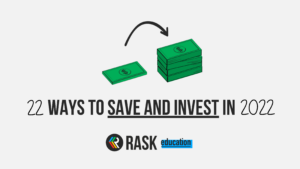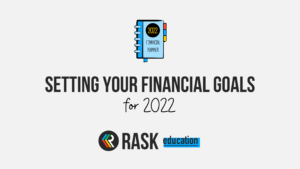Do you know how much money is flowing in and out of your life?
If you do, that’s awesome! If not, never fear, because this article is going to take you through an approach which may help you to make sense of everything.
I want you to imagine for a second that you’re a business.
You have revenue coming in from your clients (your day job) who expect a service in return.
Maybe your business has some other products or services (side hustles, freelancing or dividends) that bring in some extra revenue.
Then your business has expenses (think mortgage, groceries, internet) which have to be dealt with on a monthly basis.
Your business may also have assets (shares, property, cash) or debts (car loan, credit card, mortgage) on its balance sheet as well
For the business to remain financially viable, the revenue coming in needs to be greater than the outgoing expenses. (No, you’re not getting any venture capital or debt financing in this scenario.)
With all that being said, is your business currently operating in a viable manner or is it running at a loss?
Assets, liabilities, income & expenses
To figure all of that out, it’s a good time to work out your assets, liabilities, income sources and expenses.
Get out a piece of paper or spreadsheet, and make a list for each of the following:
- Your assets – do you have savings, super or investments?
- Your liabilities – do you have a car/personal loan, credit card or mortgage?
- Your income – this will be easy if you have just one job and maybe a little more difficult is you’re working multiple/casual roles. Look through the income you’ve received over the last six months and come up with an average monthly figure.
- Your expenses – The fun bit! Your bank may allow you to export your transaction history or you may be able to use the budgeting features within an app to figure out your average monthly spending over the past six months.
This may take a bit of time if you’ve never done it before, but knowing your numbers is a critical step in your personal finance journey.
A clear understanding of your current finances will help you start to gain control over your money, just like a business.
So are you ready to work out your current net worth?
It’s simply a matter of performing the below calculation.
Your net worth = your assets – your liabilities
If it’s a negative number, that’s perfectly okay. Now you know your starting point.
The next step is to work out how much you can currently save each month compared to your current savings rate.
Your monthly surplus = monthly average income – monthly average expenses
If you have a surplus, how have you currently been using that money? Has it just disappeared in the messiness of life, have you saved it for a goal or have you invested it?
Now you’re starting to get an idea of where you’re currently sitting financially, just like a business. It’s best to run through this process on a monthly basis to make sure you’re tracking towards your goals.
In a company, a CFO/bookkeeper would prepare the financials each month but since you’re the business here, it’s up to you to do this.
If you’d like to learn more about paying off debt and creating a budget that works, I’d encourage you to take Rask’s free Money & Budgeting Course.



